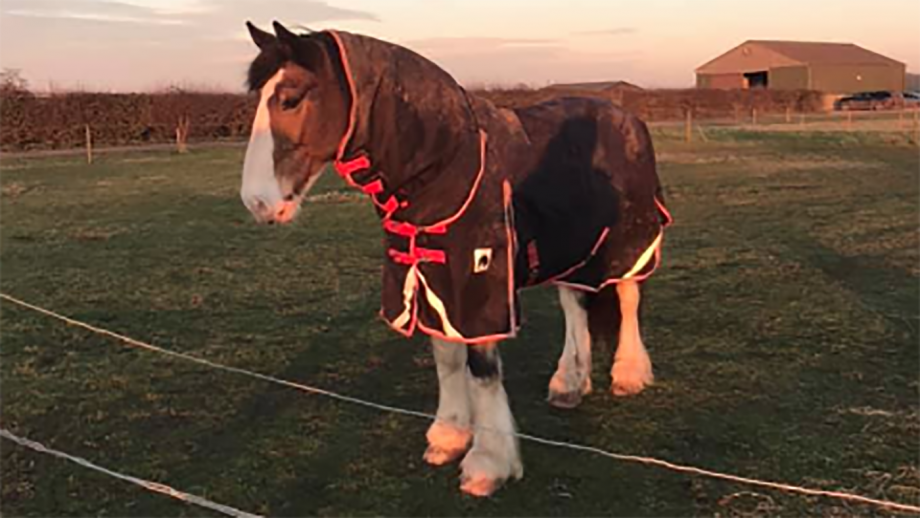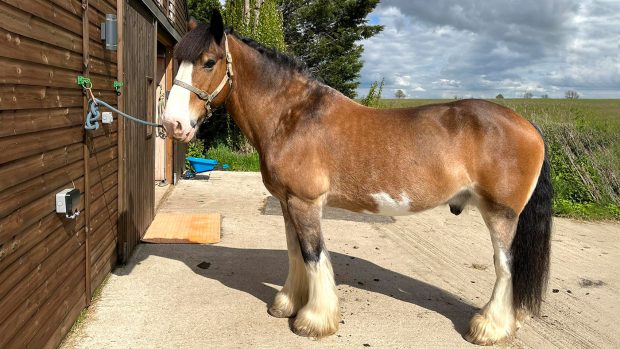Dear diary,
It’s day 2,038 of the human strangles epidemic. While many of you are now unable to see your humans for a while as livery yards close the stable doors to all outside visitors to keep the livery yard owners sane, others like me are being subjected to the horror of a human only allowed out in-hand once a day.
Many humans on box rest are beginning to develop vices, which we are familiar with; such as cribbing, weaving and door kicking. But some are developing previously unseen issues, such as excessive toilet roll hoarding, addictions to hand sanitiser and a penchant for spraying Dettol on anything that stays still for longer than 30 seconds at a time. From across the land I am receiving cries for help from equines who have been groomed so much they have bald patches, bathed so much they’re starting to get PTSD every time it rains, and lunged until they see circles in their sleep. Those unlucky enough to be owned by humans with access to dreaded horse-walkers have told tales of feeling like The Proclaimers as their humans “keep them ticking over” — but The Proclaimers only walked 10,000 miles, the lazy Scottish gits.
To be fair, it’s not just us equines who are suffering — across the nation, felines and canines are being made to take up new positions as CFOs ‘Chief Fun Officers’ as they are dragged onto video calls to “boost morale” and divert attention from the fact half the humans have either still got their pyjamas on or forgotten how to shave (and that’s just the females).
So, it falls to me, Hovis the Hero Horse, to once again lead us out of the darkness. As a man of much intellect (and to be fair, a heck of a lot of personal experience), I shall give you some tips on how to handle the box rest period:
1. Boredom breakers
a. Try tying up root vegetables around the human stables with random pieces of bailing twine, but always in places that they cannot gain any advantage from pushing said carrot into a wall. In the case of stables with more than one occupant, think about using only smaller objects in case of the boredom breaker being shoved up any unfortunate orifices in the event of unrest in the stable. This advice should definitely be followed for mixed herd situations.
b. Stable mirrors: while often wheeled out at the first hint of box rest, I would caution against their usage in this circumstance. Studies have shown that mares in particular become somewhat fixated and more prone to lashing out at other members of the herd, particularly geldings, if the question of “do I look fat?” is not answered correctly…
c. Treat balls: encouraging gentle movement while rewarding with food is to be encouraged, but a suitable vessel needs to be found. Nothing weighing more than 2lbs or that can be used as a weapon is recommended to try and ensure herd harmony is upheld.
d. In the event of excessive biting liberally smear all surfaces and other herd members in Crib-Stop or similar: DIY options include mustard, nail varnish remover and Vegemite…
2. Feed
Think about decreasing hard feed and using trickle nets to slow down the foraging of the box resting human. Padlocks on cupboard doors may also be necessary. Again, in the event of multiple occupancy stabling, try and identify any food proud behaviours and ensure the individual human is both muzzled and potentially hobbled to ensure that the rest of the stable don’t starve to death or worse still, be left with only the coffee cremes.
3. Rugging
Think about the extent of your rugging during box rest. Here it is most important to choose rugs which will allow you to easily condition score the human by eye and from a distance (see earlier point about muzzling). Coverings such as PJs and “lounge” rugs are not suitable as they lure both the human and you into a false sense of security regarding weight gain and can hide an increasingly cresty neck and fatty deposits.
4. Skipping out
Due to being slightly more litter trained than the average equine, skipping out is usually not required, but attention should be paid to the amounts of toilet roll being utilised with the stabled community, as behaviour among herds in the wild, where toilet roll scavenging is becoming increasingly violent, would indicate that it is a tipping point in herd dynamics. Should any human be observed to be utilising the litter tray more than the norm, pre-biotic yoghurt should be administered in liberal quantities. It won’t do anything, but it will pay them back for syringing it down our necks every time we dare to have runny poo.
5. Controlled exercise
a. A horse walker is ideal but in the event of this not being available, there are some DIY options, including nose rings and a rope to a rotatory washing line (use with caution in high winds), or the use of the “Joe Wicks”. This latter option should be used for competition level horses or those in high levels of work only; use for horses after prolonged periods of no turn out or low levels of work can lead to a veterinary call out or unfortunate loss of use.
b. In-hand walking — this should only be carried out with one human at a time in controlled circumstances, avoiding built up areas and ensuring that “kicking distances” are observed at all times. Do not allow the human to graze while out, and in particular do not allow intra-herd mixing — the presence of stallions can make the mares restless and will lead to hierarchy issues back at the stable. For humans who are harder to handle or will not walk in the desired manner, first try a control headcollar or chiffney backed up with a good quality lunge whip, with a stun collar being the final resort. For stallions or particularly hard to handle mares, I would strongly suggest you leave them on box rest and administer regumate in liberal quantities.
Article continues below…
You might also be interested in:

Hovis’ Friday diary: is cross-tying mother legal?
Hovis discusses humans being on enforced box rest...

6 horsey New Year’s resolutions (you’re definitely going to break)
In the event of none of the above advice working, the final option is sedation. I recommend a cocktail of magic calmer, Sedaline and Domosedan, after which point you won’t care what the human is doing…
Laters,
Hovis
Would you like to read Horse & Hound’s independent journalism without any adverts? Join Horse & Hound Plus today and you can read all articles on HorseandHound.co.uk completely ad-free.



